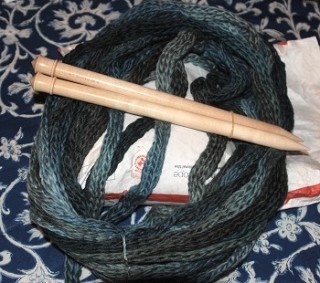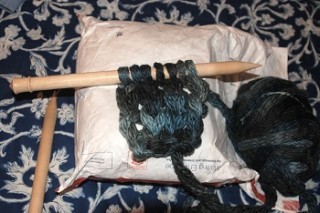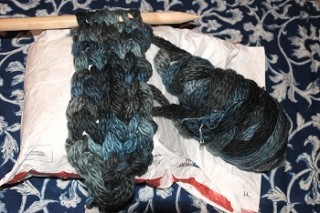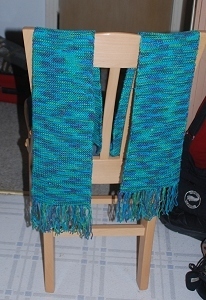Elizabeth Moon's Blog, page 34
October 11, 2011
This Time It's Romney
As far as I know, I've been a good Democrat for quite some time now, so let's see if he could "work with" me as a representative good Democrat. Is he going to support reproductive choice, gay marriage, Social Security, Medicare + a solid medical care program for everyone, investment in infrastructure, investment in job creation, appropriate regulation of the financial industry, enforcing environmental regulations on industry thus protecting the national resources of air, water, and soil, taxing the individuals and corporations not now paying income tax at their assigned rate through loopholes (if corporations want to have the rights of individuals--which the Supreme Court gave them--they can damn well pay taxes like individuals), investment in education (especially to free quality public education for all with science and not religion in charge), commitment to long-term sustainable environmental habits...etc...???
Oh. Surprise. He's not, actually, as centrist as he claims. By "good" Democrats he means the most conservative Democrats he can drag up and those passive, beaten-down Democrats who don't dare raise their voices..
Well, I could work with "good" Republicans (and there used to be good Republicans. I even voted for some of them back down the line.) But you see, Romney does not meet my definition of a good Republican any more than I meet his definition of a good Democrat.
Ritual disclaimer. Yes, Virginia, there are worse Republicans than Romney. Perry, for instance. That does not make Romney "good."
October 7, 2011
Project 5 grows...
Here's what it looks like this evening, laid out on a chair covered with a red towel to make it easier to see.

Because the pattern is basically stockinette, the edges curl in toward the purl side, making almost a complete column of the knit stitches...it looks sort of like a fancy braid. And it's comfortable around the neck (yes, I tried as soon as it was long enough.) You can tell I've used over half the yarn in this skein--I didn't worry too much about gauge, though the last time I checked it was pretty close. I'll see how long it is when I'm through the skein and if I think it needs more, I'll add on some from the other skein. I suspect I won't want it too long--it's "loose" enough that snagging is a concern.
EDIT: Here's a closeup of the look, a detail of above image:

October 6, 2011
Knitting: Project 5 Started

Yes, they do look like you could stake vampires with them, don't they?
I had a lot of trouble getting started because I had never done yarn-overs before, and this pattern called for them in both knit and purl rows. So there was a lot of casting on, messing up, ripping out, but at least the work went fast once I got going. Here's how the first few rows looked:

And here it is beginning to look like it might be a scarf someday.

September 29, 2011
A Lazy-day recipe: Soup
The base: 1 quart frozen beef stock (needed using up anyway.) Plus maybe 2 cups of water. To which I added:
28 oz can of Rotel diced tomatoes & green chilis
1 can black beans, drained and rinsed
1 can red kidney beans, drained and rinsed
1 can yellow corn, drained
3 small Polish sausages, sliced into rounds
about 1 1/2 cups rice
This produced a colorful soupy mixture of rice, beans, corn, tomatoes, and sausage bits. Rice dominated. (I'd originally thought I'd use barley, but I didn't have enough barley left in the jar. Need to put that on the list. And anyway, rice cooks faster.) Filling, exactly suited my autumn mood without heating up the kitchen to slow-cook from dried beans.. One bowl was enough for me.
September 27, 2011
Worthy Cause: Robin McKinley's auction in aid of bells
http://robinmckinleysblog.com/bells/ has the info and links to more info. Here's a link to the FAQ for the auction:
http://robinmckinleysblog.com/auction... This will save Blogmom (who's dong the heavy organizational lifting) from having to answer the same questions eighty-bazumthing times.
September 23, 2011
GOP's War on Americans
It's clear that to these Republicans, everyone already born is expendable. Only the unborn are worthy of effort to save their lives, and only until they're born. After that--because a child once born needs things that cost money--they're a liability and as expendable as everyone else. It doesn't matter if there's doubt about someone's guilt--get a conviction by however flawed a process for a death-penalty offence, and kill 'em. No second look, no review of evidence, just...kill 'em. People whose medical costs are too high? Let 'em die. We don't need 'em. Women whose health or life is at risk with pregnancy? She should have thought of that before she "got herself pregnant" (a telling phrase--she went out an found some sperm and stuffed it up her vag, did she?) and anyway, her life's not worth as much as the unborn child. Though, when the child is born, it has worth only until it needs something: medical care, food, housing, clothing, schooling, a job. Then it's a liability. In fact, the unborn has worth only in talking points, because the GOP has certainly not supported ensuring that all pregnant women have adequate nutrition, adequate living conditions, adequate medical care, to ensure a healthy pregnancy and delivery.
Workers who lose their jobs are expendable--cut off unemployment early, and force them back to work (even if there is none.) Families who lose their homes when they can't pay their mortgage are expendable--they should have managed better. The homeless? Expendable. Buncha bums who should be run out of town. Giving them shelter or food just encourages them. (It's GOP-dominated areas that laws have been passed preventing even "faith-based charities" from feeding the hungry..looks bad for business to have a line of hungry people waiting on the sidewalk.)
And soldiers--that was an even bigger shock to me, as both a veteran and a person who thought all Republicans were pro-military and supported the troops--seems soldiers are expendable not only as casualties of the wars Republicans are so hot to fight (with someone else's sons and daughters) but do not count at all if they should happen to have any opinions or "lifestyle" these Republicans don't like. Such as being gay. Such as (after DADT lapsed) admitting that they're gay. So the audience booed the soldier who admitted it, and who wanted assurance that Republican candidates would not reinstate DADT. His service didn't count (none of the candidates, in later comments, even bothered to thank him for it.) Hey! GOP-folks! Listen up! He's in a war zone. He's been shot at; he faces death and disability day and night. He is serving his country right now, and he has been for years. What are YOU doing? You're sitting on your fat arses in comfort and security his service protects, and you have the utter gall to boo him? Some patriots you are. NOT. Shame on you! (Yes, I'm mad. I'm a vet, Vietnam era--my husband too--and we know what it's like to be booed.)
That's really...sad. None of the candidates has spoken up to moderate the viciousness of the Republican audience (gosh...they might lose a vote if they showed compassion, moderation, even common sense.) As for the candidate who said sex had no place in the military...I can hear the derisive jeers of the military around the world. You can have a sexless military only if you castrate everyone, male and female, and boy would that drop recruitment into the cellar.
So basically, the vocal and public GOP is eager to kill and let die and exclude quite a large number of Americans. Well, you know what? They want a war, they just might get one they don't like. Though I'm an old vet and would strongly prefer to vote their sorry unAmerican unpatriotic selves out of office from now until however long it takes them to quit acting like spoiled, overentitled, vicious brats. But booing a serving soldier for admitting he's gay...ye gods, people. That's disgusting.
September 22, 2011
Which Class is Warring?
The tax rate for the wealthy reached its peak in 1945, at 66.4%. And yet, amazingly enough, we had an economic boom in the post WWII period. Kind of suggests that high taxes on the rich aren't that big a disincentive to economic growth, doesn't it?
In the past thirty years, the income and net-worth gap between the richest and the rest of us has widened, even as tax cuts for the rich continued to deepen. There's been a steady, almost straight-line drop in taxation at the high end from '45 to now. Over and over we've been told that tax cuts are good for us--that they free money for investment, that the rich will create more opportunity if we'll just let them alone. But that's a myth or a lie (take your pick.) Tax cuts have not resulted in more American jobs, because the rich--and corporations--went for profit over job creation. After all, as the US became less important as a market, with the growth of foreign markets, there was less reason to spend money at home, and more reason to look for cheaper labor abroad. So corporations and the rich have benefitted, and those who lost their jobs (and homes, and cars) lost out. The net worth of the rich--along with their annual income--has grown enormously, and the gap has continued to widen. It wouldn't have, if the super-rich were spending their tax-free money on making the economy healthier. The richest 1% controls over a third of Americans' net worth; the top 10% controls over three fourths. And that leaves a quarter or less for the other 90%. Yet it's the bottom--especially the lower half of the bottom--that gets the blame for costing too much.
The drop in average income is steep, too. The top 0.01% (that's one hundredth of one percent) has an average annual income of over $27million. The top 0.01 - 0.1% has an average annual income of over $3 million. The top 1% has an average annual income of over $1 million (which means some of them have an income below $1 million.). Below that, the top next nine percents (10% minus that top 1%) has an average annual income of about $164,000. And the average income of the other 90%? About $31,000. Doing the division, that means the top one-hundredth of one percent has an average income approximately 870 times that of the entire lowest 90%.
So who's making war on whom? When you look at it in terms of the figures, it's the top 1-2% who have "made class war" on the rest of us, by deliberately making our economic status worse, by cutting jobs, by cutting their support for government (which not only employed people but provided essential services, such as infrastructure, education, disaster relief.) They don't need Social Security--so no one should have it. They don't need help with medical expenses--so no one should. They routinely criticize the other 90% for daring to have needs--whether it's for help in old age, or after natural disasters, or for affordable housing--as having failed to save and invest wisely--though, as studies have shown, when income is uncertain (when jobs are disappearing like snow in August), or when circumstances demand a higher than possible income (often happens with accident, disease, or having a disabled child), no amount of previous fiscal responsibility will prevent disaster. And these blows damage the national human resource as well as the economy: when people who had good jobs and were good workers lose them, the "trickle down" effect can blight whole cities...and cause deaths.
What the "no taxes" people fail to admit is that they have benefitted from the taxpayer-provided infrastructure and services that the rest of us pay for: roads (the interstate highway system, for instance, which did not exist when I was a child), airports, sea ports, bridges, inland waterways, police, fire, and emergency services, public hospitals, schools and colleges and professional schools that deliver educated workers and skilled professionals to the workforce. As Elizabeth Warren says so well: nobody in this country got rich by themselves. ALL benefitted from some tax-provided services. Any business in this country has benefitted from both infrastructure (how you get raw and finished materials from origin to market, how you keep the populace free of cholera and other diseases) and a relative political stability compared to many other countries..
Put one of these whiners in a position without any of that--with no access to anything that used a tax-provided service or structure--and they'd be screaming bloody murder in a week. No driving on any public street or highway. No walking on a public sidewalk or street. No public water supply at your house. Kids can't go to a tax-supported school, college, or university. If there's a fire, no one will come. If someone vandalizes your house or kicks in your door, police won't come. Have a heart attack or break some bones--no ambulance, and no bed in a hospital supported (partly or wholly) by taxes. No access to the tax-supported courts, no access to any public agency or representative (county commissioner, city council, state or U.S. legislator) because, after all, taxes pay their salaries. In case of disaster, rescue teams and other aid will pass you by...fire, EMS, National Guard, etc. all get tax money.
So the class warfare, as I see it, has been the determination of those in the million+/year bracket to accumulate more and more and more, and contribute less and less and less, at the expense of the rest of the citizenry of this country. It's not class warfare to insist that they contribute more.
September 19, 2011
Color Vision: Choosing Finish for New Table
I asked for color samples; they came today. In our kitchen, I suddenly saw four possibilities: the first two plus Chocolate Spice and Old World Mission. On the phone last week, the saleslady said Chocolate Spice was "cooler" toned than Nutmeg.
I gradually came back to my first two choices and was dithering, but then it occurred to me that this table won't be in our kitchen, but in the other house's back room. That room has a lot of natural light, and aside from that is paneled in rough yellow pine beadboard (not varnished) and the doors on the built-in buffet thing at the far end are the same, almost bright-yellowish wood, and so is the door to the storage room. The floor is a mottled brown/beige carpet.
I took the samples to the other house, and looked at them directly against, and near, the paneling and the cabinet doors, both with and without the artificial light. It was immediately obvious what the best color was--no doubt at all that Nutmeg won. Chocolate Spice was indeed a warm/cool clash with the walls; Asbury Brown suddenly looked harshly dark, not just a rich dark brown, against the lighter yellowish walls and doors, and Old World Mission was too red and argued with both the carpet and the walls. Nutmeg fit into the room as a good accent brown and didn't fight with anything.
Now to call and confirm my finish color choice. (Now why didn't I take those samples over there FIRST? Because I was eating lunch and couldn't wait to see them!)
Relevant: our kitchen has aqua-turquoise counters (not my choice), white appliances, vinyl flooring that mixes white, pale gray, a little darker gray and a soft blue-gray, one pale gray wall, and cabinets of natural wood (old) in a warm honey-syrup sort of color. The cool does not clash because the warm cabinets are not aggressively yellow. The lighting is one north window over the sink and CFLs and LEDs in that are cool-toned. At the far end of the room, the old cool-toned fake-wood paneling is medium dark with rosy undertones; the carpet is gray Berber with little bits of other color (just enough not to be flat gray.) So the stain samples that looked good here were in a completely different color environment than the room where the table will go, which has so much aggressively yellow pine, a darkish floor covering, and lots of windows that bring in direct sun.
Always check your color samples in the place where they will be used. I knew that; I just wanted to open the package.
September 16, 2011
Knitting Interlude

The fringe is of the same yarn, gauged by wrapping around an old paperback of Rosemary Sutcliffe's Warrior Scarlet, then cut along one edge. Two of the strands were pulled through every other stitch. The scarf is 30 stitches (6 inches) wide, almost six feet long w/o fringe (a little over six with fringe), worked with size 8 needles in Berocca's "Comfort" yarn. The color is "Sanibel Island."
September 15, 2011
Funding Models for Books: the new age
Back when the possibility of publishing online was just a gleam in the eyes of some of us, we started trying to figure out how this would turn into money we could live on. These discussions took place online and at every convention I attended, and involved a lot of brainstorming. Publishers were just starting to demand electronic righrts, even if they had no immediate plans for producing e-books. We knew some readers wanted to read books on their computers; we knew others did not (hated reading on screen.) We knew that effective e-readers were years away, largely because the technology for really light, very readable screens, and devices with very long battery life, weren't there yet. But we were not "head in the sand"...we were trying to figure out which way the bandwagon was going to start rolling, and when to jump on it. We could already see the downside: with the lowered cost of scanners and OCR software, people were beginning to scan our books and share the files with others. And no, boys and girls, this did not result in a bump in our actual sales figures. Instead, some of us (including me) got snarky emails trumpeting the fact that "I read your new book and I didn't pay a penny for it, ha-ha-ha!" That dampened the enthusiasm of some (not all) for the new model-less business model.
Several of the ideas launched in those early discussions among writers were tried out with short fiction and later with books. Several problems emerged. One was that the internet was beginning to flood with a lot of non-professional reading material, all of it free for the reading. The writers of this were glad to have any readers; they'd never expected their writing to make them money. A few of them were very good. Most of them would never have achieved publication by magazines or book publishers. Internet readers vary in their discriminating tastes, let's say, and for some this glut of not-so-great was good enough--and it was FREE--and they began to complain about the cost of professional fiction. One response to that was to consider how to offer online readers a guarantee of quality. Thus online magazines were born, with editorial staff and a payment scheme for the writers. Another response was to consider having websites shared by several writers, all of them professionally published, with stories/books available there for download. Another problem, though, was that anything on the internet could be, and was, instantly copied elsewhere and shared elsewhere--which was a leak in the money-collecting bucket. Turns out an astonishing number of people think writers are overpaid and underworked, and that they "should" write just for the satisfaction of having readers. (So maybe power companies should give us free electricity just for the joy of seeing so many homes light up at night...and farmers should give away their crops just for the satisfaction of knowing people have enough to eat...and politicians should work for free just for the satisfaction of creating good government...sure.)
The first idea that I saw show up was the internet equivalent of the "loss leader." A loss leader is an item sold below cost to get people into the store. Loss leaders work for most merchandise, but there's a problem when customers start thinking the loss leader price should be the regular price. "If you can sell if for 30% off today, why can't you sell it for 30% less all the time?" (Because you'd go broke, that's why. Or, like Wal-Mart, you'd have to pressure your suppliers to cut costs to the point where their workers aren't making a living wage.) And not everything can be a loss leader. Books are particularly problematic. It takes me a year to write a book, on average--and it's a full-time job. Some people are faster (2 books a year) and some are slower (a book every other year or so.) If I treat a book as a loss leader, that's a long time to live with no income. Stories are easier (quicker to write) but some book readers don't like short fiction. Hmmm. (There was a lot of "Hmmm" in those early discussions.)
So: free stories as loss leaders. Initially, with mostly pro writers doing this, a lot of people read them and some (not all) produced additional sales. Individual experiments in putting up fiction "free" had varied results, largely dependent on the writer's fan base and ability to communicate with them...to get them to the writer's website and actually reading the offered material. Without the social media we have now, that meant the writer spending time on emails, listservs, email newsletters, etc. A little later, blogging on their own or another's blogsite. The idea was that free fiction would introduce the reader to the writer's work, and then at least some of those readers would go buy something somewhere. For writers whose works appealed to "early adopters" of reading online, this sometimes worked, but not for everyone. The reading experience online--in those days, always sitting at a computer and reading (at best) simple HTML or pdf--was unpleasant for many readers (and still is.) Some writers gave up on the notion; others thought later tech and internet changes might make it viable. Many writers now have some free fiction up on some (all) of their sites. (And most writers have websites now.)
Then came "free with request for donations if you like it." This was supposed to evoke the wave of money from grateful readers that some of us were told early on would bury us in cash. Early experiments (all this is before e-readers and nearly all social media--there was no MySpace or Facebook or Twitter and I think LiveJournal was later than I'm talking about now) showed that in order to get anything equivalent to a print publication out of a "please donate something" button, you had to attract an unlikely number of readers to that site and for that piece. Several online magazines went down the tubes that way--people simply did not donate enough to keep the site alive, let alone pay contributors. (Online newspapers have found the same thing--people will happily read free material and they won't pay voluntarily at a rate to pay for the site.) These magazines might have succeeded if they had had a huge readership to start with, but starting from scratch to build one, and having no other funding source, they did not have anyone (but the founders) already committed to their financial survival. The same is true of individual writers, of course. Building a fan base that cares whether you have money for the phone bill or your cat's visit to the vet takes time. Most people do not throw money at every "please donate if you like this" button on the internet...they don't like it that much. Moreover, some people react badly to donation buttons, storm off in a huff, and complain that the writer is nothing but a money-grubbing hack.
A third experiment involved the 'storyteller's bowl' model, something we felt would only work for writers with a name and following already, in which those who wanted the story would contribute upfront, and when a set amount had been reached, the story or books would be written. In fact, this method (now called "crowd funding") has been used, and is in use now, in several variations. As expected, it has been most effective for those who already had a fan base, and least useful to those with none. The fan base did not have to be for the writer's previous fiction: several bloggers with large readerships for their nonfiction blogs were successful with internet funding a fiction book--their fan base was big enough, and willing to support their fiction. Writers have tried out "whole funding first" (waiting to produce the book until they had the "advance") and "serial funding" where they write each chapter as it is "paid for". The latter has worked for Sharon Lee and Steve Miller in their Liaden Universe books (which were orphaned by the collapse of their former publisher years back.) It got them over the bad patch and back into traditional publishing, but it was a squeaky thing. They offered extras for those who donated more to the "bowl"--such as a print version of the final book--but have commented that there were hitches in that getalong they had not anticipated. (As with any print publication, a rise in the price of paper, or shipping, can erode the profit margin.) They are still doing self-publishing online (typically with shorter works related to their long ones--side stories); the pure "donation" model brings in something, but not usually equivalent to professional markets and not enough to live on, and they're publishing conventionally as well.
The rise of social media has improved the chances for a free-donation-funded publishing project to work but (drawing on comments from writers I know who have tried it, right up to the present) the results are still highly variable, dependent on the writer's previously-acquired fan base size and the exact nature of the project. And some blind luck. It is much easier now to let people know about your new story or book; writers typically have multiple social-media accounts. There's still a problem that some people are offended if a writer's social media site (or website, for that matter) is focused all (or more than that person likes) on the writer's business of writing. Others are upset if it isn't all about the books/stories/writing. And despite websites, blogs, social media...some people still will not get the word that there's information out there from that writer. For some writers, the time it takes to post in the various social media, update the website, and format the work available on their site is not repaid by the money that comes in from donations. For others it is. Writers, like anyone else, continue to do what's worked for them, if it's still working...so if they hit it with their first free-but-please-donate project, they'll do more of that, and if they don't, they'll try something else.
Along with social media, the development of useful e-readers (something we writers saw coming years before they made it to market--the developers would come to conferences and talk about their latest projects) has enabled writers to penetrate the book-reading market more independently than before. By this time, many writers were adept with computer files and changing formats. Many of us had worked with Adobe products, coded our own websites with HTML (and some hadn't--I quit doing that to write more fiction and hired a friend to do the coding. My days were full already.) Once upon a time, when publisher let a book go out of print for the last time, all a writer could do was revert the rights and try to find another publisher. Sometimes works--one of mine was picked up by another publisher. More often, these out of print books languished with no outlet. But not now. Older books can be e-published by either a speciality e-publisher or by the writer. What was once a liability (a backlist out of print) has become an asset--available for experiments in e-publishing.
Many writers are experimenting with self-publishing as e-books (or as a mix of e-books and print-on-demand)--either original fiction or books to which they have the rights reverted. This corner of the market has grown with the growth of both social media (allowing much easier communication with the fan base, both to let them know what's coming and to get their reaction to things) and the e-reader market. Along with that has come the ability to create marketable (marketable just like any other book) e-books that can be purchased through known outlets like Amazon. And another benefit is the ability to create "covers" for these e-books as attractive as the covers on the original books (which can't be used without permission of the original publisher and the artist.) Some writers are good enough photographers and artists to make their own covers, but a niche market for digital artists has arisen doing covers for self-published e-books. I have a friend who's been instrumental in developing the website and the back-side stuff for a lot of self-published backlist e-books (and has a number of her own up now.) One of the things learned from individual and small-group attempts is that it takes time--years, in fact--to build an audience willing to pay money for fiction on a given site, in an environment where there's a ton of it out there for free. Some of these sites and groups are beginning to get traction now, but they're several years old at this point.
Over the past decade and a half, I've heard of the success or failure of many ideas of generating income from writing fiction online--like many other writers, I'm not only in "open" forums like this one, but in closed listservs of writers who are, and have been, trying to figure out how to continue to make a living as storytellers. As those groups are not thrilled when a member reveals all to the outside world...I'm not revealing anything you couldn't find out elsewhere: no names, no pack drill. (Lee & Miller have written extensively about their experiments on their own open site.) We're not pretending change isn't happening, or refusing to get our heads out of the sand--but we're also not risking our survival on unproven bright ideas. What the gurus of the internet told us--that we should admit that storytellers won't ever make a living again and we should teach, or do journalism, or some other form of not-doing-what-we-do-best--has so far not been true, though it's become harder to make a living. And though traditional publishing is regularly announced to be dying, it still provides--for those who can hang on--a more stable income flow than otherwise. (Keeping in mind that writer income has never been as stable, as predictable, as a regular paycheck. For full-time writers, with no other income source, this uncertainty is one of the few predictable things about writing for a living.) Recently (as in, the past six months) with the growth in the sales of e-readers, sales of the backlist books and new books published by established writers have gone up--an excellent thing for writers.
It's still more difficult for writers without an established fan base or some way of attracting one (other than just writing good stories.) This is troubling, as new writers start out without that fan base--unless they're famous for something else. And being pretty or a good singer or a comedian or getting your wilder escapades on YouTube does not necessarily translate into being a good writer...while many good young writers are (as good young writers have been in general for a very long time) just not that good at anything but writing. Getting good at other stuff too takes time...and time away from writing. People just don't pay unknowns that much (on the whole--yes, there are always exceptions, outliers.) Neither did trad publishing, but at least they got the name and the book out there into bookstores, where people expected to find new books.
But. The fact remains that one model beloved of the early internet-fiction enthusiasts--that putting something up for free would automatically generate tons of income from grateful readers--hasn't worked at a level that allows writers to pay the bills year after year. Maybe it will someday. But not yet. The crowd-funding approach has worked for some and shows promise for more. E-books selling through Amazon and other online outlets is showing more promise now than a year ago. Pilot projects trying out variant funding methods have been going on and are still going on, and as conditions change any one of them may turn out to be a viable model....for some, at least. In the meantime, readers should understand that writers are trying to both write their stories and find new models of distributing those stories that will pay the bills. It is simply not true that writers are ignoring the present (and future) and doing nothing.
Elizabeth Moon's Blog
- Elizabeth Moon's profile
- 2621 followers



